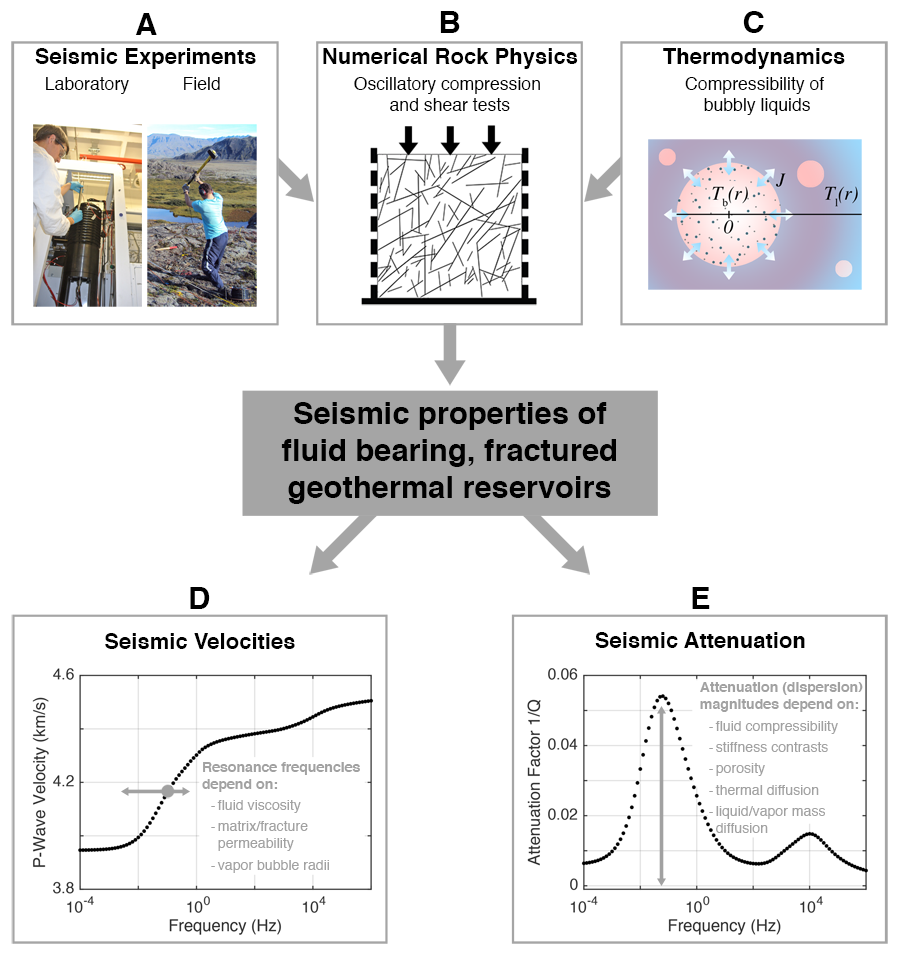Unlocking the Geothermal Energy Hidden Inside the Earth: Seismic Properties as a Function of Reservoir Conditions
In contrast to other renewable energy resources, geothermal reservoirs are hidden at several kilometers depth beneath our feet. During the past decades, seismic exploration methods have been established as a common non-invasive tool to observe the Earth’s interior. To enable the investigation of geothermal reservoirs with seismic techniques, we have established how seismic parameters are linked with the hydraulic permeability of the rocks and the energetic state of the saturating fluids.
Quantities measured with seismic techniques are the seismic velocities of geological formations, which control the travel time of the seismic waves, and the seismic attenuation factors, which cause the decay of the wave amplitude with distance/time. In our work we have investigated how these quantities depend on reservoir permeability and fluid properties. Seismic experiments under known ambient and in-situ pressure and temperature conditions (laboratory) and at reservoir-scales (field-experiments) were conducted. This provides input parameters for numerical modeling techniques, which are used to compute the seismic properties of fractured geothermal reservoirs at variable scales. To account for varying fluid conditions, ranging from the liquid to the boiling and ultimately to the vapor state, thermodynamic relationships are implemented into the rock physics model.
The combined experimental, numeric-petrophysical, and thermodynamic investigations deliver frequency-dependent seismic properties as a function of the hydraulic rock structure and fluid properties. We have shown that on one hand the resonance frequency, at which the seismic velocities show marked dispersion and at which the seismic attenuation is strongly increased, depends on the hydraulic permeability of the rock matrix and fractures, on the viscosity of the pore fluids, and on the diameter of vapor bubbles. On the other hand, the magnitude of the attenuation and dispersion varies as a function of fluid compressibility, thermal/mass diffusion in a multi-phase fluid, porosity, and stiffness-contrasts within the host rock. Such relationships help to interpret seismic reflection and travel-time tomograms in terms of reservoir parameters. It therefore provides a tool for evaluating whether a specific site is suitable to extract geothermal energy for electricity production or distributed space heating.

The team involved in this project include Dr. Melchior Grab and Prof. Johan Robertsson, ESC member and head of the Institute of Geophysics.
The Institute of Geophysics performs leading research and teaching activities over a wide range of geophysical disciplines. Detailed information on research activities, teaching, people can be found in the corresponding sections on the institute's website.